Classification of nasal bone fractures
Introduction
There is no standardized, world-wide accepted classification for nasal fractures. We provide a simple classification system based on clinical findings.
Laterally displaced fractures
Laterally displaced fractures occur secondary to a lateral blow to the nose. The nasal bones are pushed medially on the side of the impact and laterally on the contralateral side.
They make up the majority of nasal fractures. Most of them can be managed by closed reduction.
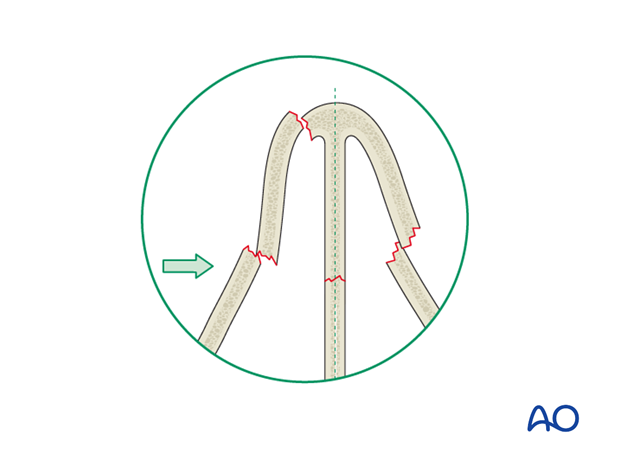
The dorsal part of the nasal septum is usually involved and can be displaced.
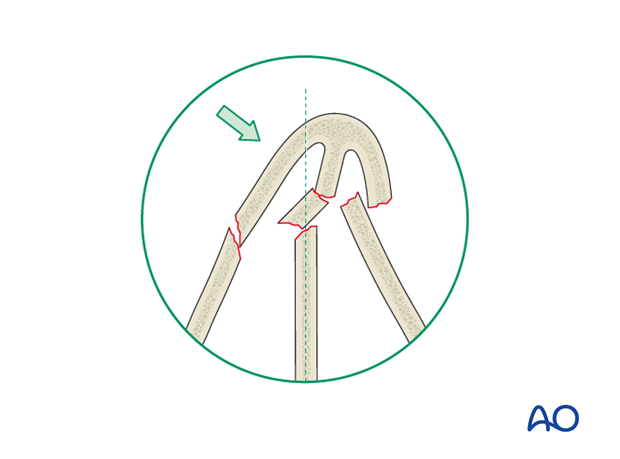
Posteriorly depressed fractures
Posteriorly depressed fractures occur secondary to a direct blow over the nasal bones, which are pushed inside to the ascending process of the maxilla. The nasal septum is always involved. This type of fracture can be associated with NOE fractures.
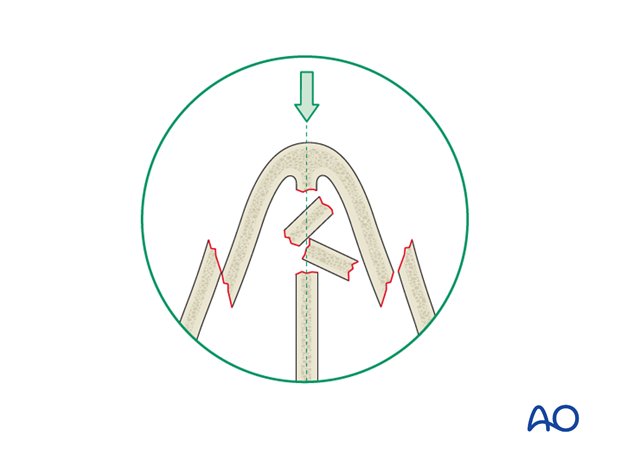
Disarticulation of upper lateral cartilage
A disarticulation of upper lateral cartilage is usually due to a localized strong blow to the central third of the nose, as in car accidents with the steering wheel hitting the nose. The upper lateral cartilage can be avulsed from the bone.
The diagnosis is mostly clinical because cartilage is not visible on standard radiographic imaging. It can be diagnosed on soft-tissue windows of CT scans.
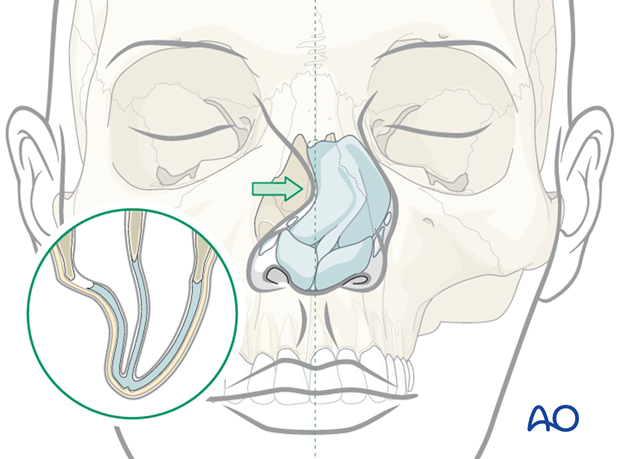
Anterior nasal spine fracture
A nasal spine fractures can occur in isolation or in association with other nasal fractures. Displaced fractures are often associated with nasal septum dislocations and/or fractures.
The illustration shows an anterior nasal spine fracture which occurs in association to degloving injuries of the upper labial vestibule as in a steering wheel injury.
If isolated, anterior nasal spine fractures do not usually require treatment.
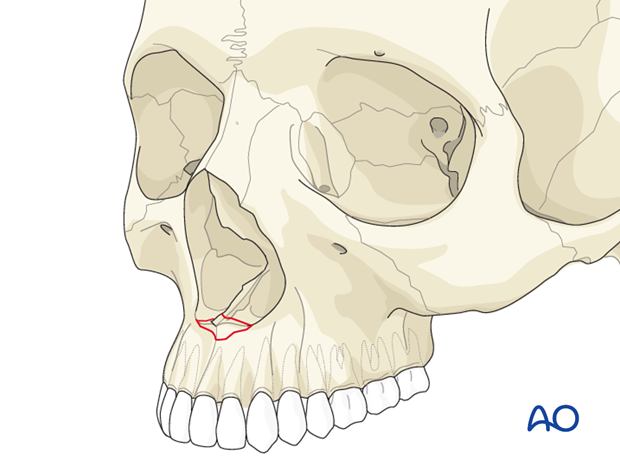
Involvement of nasal septum
The nasal septum is almost always involved in nasal fractures and must be evaluated to determine if treatment is necessary. If the impact force is weak, nasal bone displacement is usually present without septal fractures. With more significant forces the septum will be fractured.
Nasal septal injuries often lead to nasal airway compromise. The need for repair is individualized based on the patient’s symptoms.
Septal injuries may result in a loss of support of the cartilaginous nasal dorsum which can require cosmetic reconstruction.












